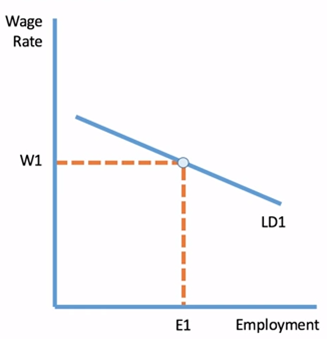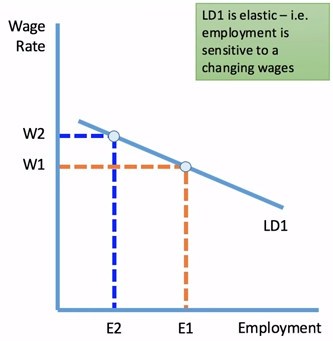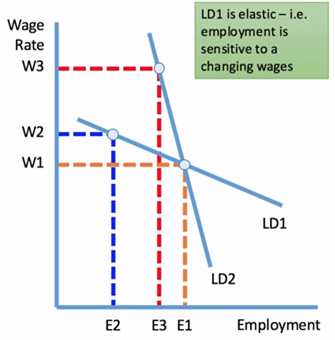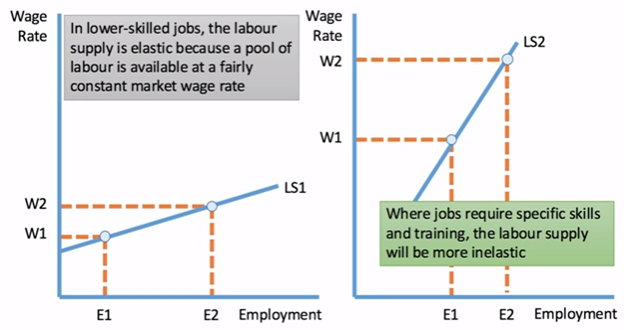Reading: Elasticity of Labor: Supply & Demand
Elasticity
of labor demand measures the responsiveness of demand when there is a change in
the wage rate. It depends on:
•Labor
costs as a % of total costs: When labor expenses are a high % of
total costs, then labor demand is more elastic.
•Ease
and cost of factor substitution: Labor demand is more elastic when a
firm can substitute easily between labor and capital inputs.
•Price
elasticity of demand for the final output: This determines whether a firm can pass
on higher labor costs to consumers in the form of increased prices.

Elasticity
of labor demand measures the responsiveness of demand when there is a change in
the wage rate. It depends on:
•Labor
costs as a % of total costs: When labor expenses are a high % of
total costs, then labor demand is more elastic.
•Ease
and cost of factor substitution: Labor demand is more elastic when a
firm can substitute easily between labor and capital inputs.
•Price
elasticity of demand for the final output: This determines whether a firm can pass
on higher labor costs to consumers in the form of increased prices.

Elasticity
of labor demand measures the responsiveness of demand when there is a change in
the wage rate. It depends on:
•Labor
costs as a % of total costs: When labor expenses are a high % of
total costs, then labor demand is more elastic.
•Ease
and cost of factor substitution: Labor demand is more elastic when a
firm can substitute easily between labor and capital inputs.
•Price
elasticity of demand for the final output: This determines whether a firm can pass
on higher labor costs to consumers in the form of increased prices.

Elasticity
of labor supply measures the extent to which labor supply responds to a change
in the wage rate in a given time period

Elasticity
of labor supply measures the extent to which labor supply responds to a change
in the wage rate in a given time period

Modifié le: mardi 14 août 2018, 10:14
